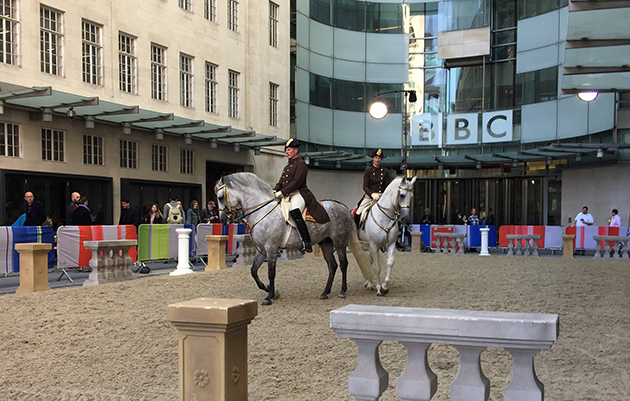A rider who “smashed her ribcage to pieces” in a fall at home wants to warn others of the dangers of using beach sand in arenas.
Julie Drummond-Dunn suffered 13 fractures and now “feels like metal Mickey” as her ribcage is held together with titanium plates.
The Cornwall-based rider, who says she is “the wrong side of 60”, was injured as although her surface was soft on top, there was a rock-hard layer underneath.
“I might as well have fallen off on a road,” she told H&H.
“My ribs were so smashed; they were pointing forwards, backwards, up and down – my arm had gone through my chest.
“The surface has been in five or six years and I rake it and level it and weed it. I thought I was doing everything right, but I wasn’t doing it right enough.
“Go down a couple of inches and you’d almost need a pickaxe to break it up.”
Ms Drummond-Dunn spent two days in intensive care after the fall in August and is not yet back in the saddle. She has since ordered fibre to mix with her surface “to make it softer if I fall off again”, which is when she found out about the sand.
“I’d never heard of it,” she said. “I’d always thought silica sand wasn’t real sand; something fake and expensive, but it’s not, it just doesn’t have the same problem as the sea sand.
“I can’t have my whole surface taken up, but I hope having the fibre mixed in will stop the hard platelets forming.”
Ms Drummond-Dunn had to miss the British Showjumping national championships, for which she had qualified with her homebred pony Moonspark Sweet Toffee Poppet by winning two of the club leagues.
“I was hoping we might be in with a chance of getting somewhere,” she said.
“I am going to get back on – but I’m never getting on a horse without a body protector again.”
Alex Goldsack, of Equestrian Surfaces, explained that as beach sand is just dredged up, there is no control over, or consistency of, particle size.
“If it comes from a quarry, they wash it, as you only want a certain amount of silt content,” she told H&H.
“A small amount of silt will allow the sand to hold together, but if there’s a large quantity, it will sink to the bottom and then go solid. This prevents drainage but it’ll also be rock-hard, like riding on a road.”
Article continues below…

How to choose the right arena surface
Expert advice on the range of arena surfaces

Ever wondered what it takes to build a showground? (These stats will blow your mind)
What does it takes to turn a grassy
Ms Goldsack explained that the ‘washing’ of quarried sand involves it being sieved, on an industrial scale, so the resulting particles are of a certain size and specification, and that it is this which is lacking in beach sand.
“There are so many different types of sand,” she added. “Even in a quarry which provides silica sand, there might be 13 different grades, and only two are suitable for equestrian use.”
For all the latest news analysis, competition reports, interviews, features and much more, don’t miss Horse & Hound magazine, on sale every Thursday.




